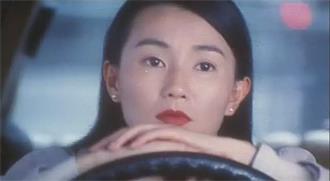(单词翻译:单击)
Chinese Hong Kong Film History
中国香港电影史
At the end of 1895, foreign films came into Hong Kong where there were the public films shown in 1903 and a fair number of cinemas were set up in 1907. The number offilms and their time of being shovsm were bigger than before.
1895年底,外国电影进人香港。1903年,香港开始有公映。1907年开 1始,不少电影院纷纷在香港开办,而且放映的次数和数量都比以往多。
Accordingly, the year of 1907 was seen as the first peak year of Hong Kong film industry.
因此,1907年被视为香港电影业的第一个髙峰年代。
In 1909, LiangShaopo directed and starred a quite simple humorous film Stealing a Roasted Duck, its producer worked together with Li Minwei to make the first Hong Kong feature filmZhuang Zi Tests His Wife in 1913, which hastened Hong Kong Film industry and Li Minwei was praised as a “Father of Hong Kong film”.
1909年,梁少坡导演并主演了一部十分简单的诙谐剧《偷烧鸭》。1913年,它的出品人布拉斯基后来和黎民伟合作制作了香港的第一部故事片《庄子试妻》,并因而促进了香港电影业,而黎民伟更被誉为“香港电影之父”。
The appearance of this filmsymbolized the beginning of Hong Kong film in fancy.
这部电影的出现,象征着香港电影萌芽期开始。
In 1922, Li Minwei and his elder brother Haishan and Li Beihai originated the first Hong Kong film company—Minxin Film Company which greatly promoted Hong Kong filmindustry.
1922年,黎民伟及其兄长海山、北海创办了香港第一家全由香港人投资创办的电影制片公司——民新电影公司。
It not only produced the first Hong Kong newsreel documentary in 1923 and set up the first actor training institute to train the people who have talents foracting and also made the first long feature film Rouge, Hong Kong film industry had been gradually grown during 1924 and 1925 but interrupted by the strike in June,1925. A year later, the film show industry began to revive.
民新的成立为香港电影业带来很大的推动作用,它不仅在1923年出品了香港第一部新闻纪录片,在1924年成立了第一个演员培训所以培养有演戏潜质的人,还摄制了香港出产的第一部故事长片《胭脂》。1924年至1925年,香港电影事业已渐渐成长,但因1925年6月大罢工的影响被迫中止了。一年后,电影放映业开始复苏。
At the beginning of 1930, Li Beihai established Hong Kong Film Company with other people, and produced itspioneering work The Witty Sorcerer, It was Uanhua Film Company united by Minxin and other several film companies that made Hong Kong film industry developed steadily.
1930年初,黎北海等创办了香港影片公司,制作出其创业作《左慈戏曹》。真正令香港电影业稳步发展的是1930年由民新与其他几家电影公司合并而成的联华影业公司。
Lianhua brought great influence on Hong Kong film industry and it was one of the greatest film studios prewar in China.
联华为香港电影带来了很大的影响力,是战前中国最大的电影厂之一。

When gods and spirits' swordsmen films prevailed over the country, Lianhua produced many films with the health theme and freshstyle,including Conscienceness, whichwas the first Chinese film entering American film market, and1 Song of the Fisherman, which was the first Chinese film winning the international award,etc. They notonly changed the foreigners’ opinion about Chinese film,but also created its new wave.
当全国盛行拍神怪武侠片时,联华推出了许多主题健康、风格清新的电影,包括第一部打进美国电影市场的中国电影《人道》及第一部在国际上获奖的《渔光曲》等,不但改变了外国人对中国电影的看法,更创造了中国电影的新浪潮。
In 1934, Lianhua in Hong Kong was disunited and Li Beihai founded the firstHong Kong sound film studio—Zhonghua Film Studio and made a partially sound film Conscience and the first sound film The Silly Youth Enter Bridal Chamber, At the sametime, the film companies produced many silent films like Dai Lao Bai Shou, etc. according to the tradition. Therefore silent films and sound ones coexisted during 1933and 1934.
1934年,联华香港分厂解体,黎北海创建了香港第一家有声电影制片厂——中华电影制片厂,并制作了一部局部有声片《良心》及第一部有声片《傻仔洞房》。与此同时,电影公司还依着传统,拍摄了不少默片,如《呆佬拜寿》等。故此,1933年至1934年间,可说是默片与有声片共存的时期。1935年,香港电影步进有声时代。
In 1935, Hong Kong stepped into its sound film age. Since 1935 the number of Cantonese films made in Hong Kong was increased yearly. Influenced by the anti-Japanese movement, a number of patriotic films were made. Among them,the Life Line was directed by the early famous Hongkong director Guan Wenqing.
从1935年开始,香港的粤语片产量每年递增。受抗日热潮的影响,香港生产了多部爱国电影,其中包括香港早期著名电影导演关文清导演的《生命线》。
In 1936,socialeducation films became the mainstream in Hong Kong films like A Woman of Guangzhou by Shao Zuiweng.
1936年,社会教育片成了香港电影的主流,如邵醉翁执导的《广州一妇人》。
In 1937, “July 7 Incident” happened, which resulted in Hong Kong’s high spirit of resistance against Japan and film workers started to make anti-Japanese andpatriotic films one after another.Among 85 feature films in 1937, there were 25 anti-Japanese and patriotic films, of which Last Minute by Zhao Shushen could beabsolutely regarded as the classic work.
1937年,由于“七七事变”的发生,香港抗日气氛高昂,因此电影工作者也纷纷开拍抗日爱国片,在1937年出产的85部故事片之中就有25部抗日爱国片。其中,由赵树燊于1937拍摄的《最后关头》绝对可以称得上是经典之作。
Next year, patriotic films continued to prevail. In the same year, the first Hong Kong color film A Woman of Guangzhou (II),the first swordsmen film, the adventures oi Fong Sai - yuk and the first Chinese language film Diao Chan,A Beauty were produced in succession With the appearance ofDiao Chan,A Beauty Hong Kong entered the coexistence period of Cantonese films and Chinese language films and the number of the latter was increasing
1938年,“爱国片”继续盛行。同年,香港第一部彩色电影《广州一妇人续集》、第一部功夫片《方世玉打擂台》及第一部国语片《貂蝉》亦相继出现。随着《貂蝉》的出现,香港进人了粤语片与国语片并存的时期,国语片的产量渐多。


